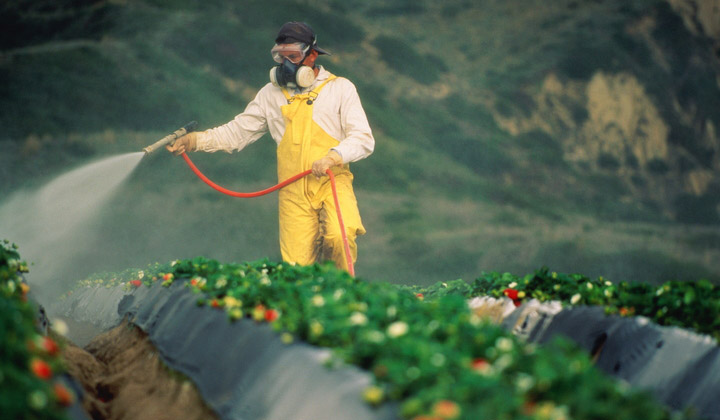FDA Resumes Testing Foods For Weed Killer, Safety Questions Grow
by Carey Gillam
The Food and Drug Administration (FDA) has resumed its first-ever endeavor to evaluate how much of a controversial chemical is making its way into the U.S. food supply. And the tests can’t come soon enough as safety concerns about the herbicide known as glyphosate grow.
The FDA, the nation’s chief food safety regulator, launched what it calls a “special assignment” last year to analyze certain foods for glyphosate residues after the agency was criticized by the U.S. Government Accountability Office for failing to include glyphosate in annual testing programs that look for many less-used pesticides in foods. But the agency scuttled the testing after only a few months amid disagreement and difficulties with establishing a standard methodology to use across the agency’s multiple U.S. laboratories, according to FDA sources.
Many observers suspected the suspension might be politically motivated because it came after one FDA chemist found glyphosate in several samples of U.S. honey and oatmeal products, including baby food. As well, private organizations have detected glyphosate residues in an array of food products. In April the Canadian Food Inspection Agency reported that it found glyphosate residues – mostly in small amounts – in roughly 30 percent of foods it tested. The U.S. Department of Agriculture had intended to start testing some food samples for glyphosate in April of this year, agency documents obtained through Freedom of Information Act requests show. But the agency decided to abandon that plan.
Sources inside the FDA said agency glyphosate testing resumed in early June and FDA spokeswoman Megan McSeveney confirmed the news this week. Alongside the testing for glyphosate, the FDA laboratories have also said they were analyzing foods for 2,4-D and other “acid herbicides.” Chemical company players have started combining 2,4-D and the herbicide dicamba with glyphosate in new weed-killing products and use is expected to rise, so tracking residues in food is important. But the FDA has provided few details about any of the testing, and what is known has mostly been learned through internal documents obtained through Freedom of Information requests.
Glyphosate is the most widely used herbicide in the world, and is the key ingredient in Monsanto Co.’s branded Roundup herbicides. It has been classified as a probable human carcinogen by the World Health Organization’s International Agency for Research on Cancer (IARC), which said that years of research on the chemical shows evidence of genotoxicity and oxidative stress from glyphosate, including findings of DNA damage in the peripheral blood of exposed humans. But U.S. and other many other regulatory bodies have said there is not sufficient evidence to support that view.
The concerns about glyphosate have sparked debates across the United States. On Wednesday, California environmental health regulators were holding a public hearing regarding their plans to add glyphosate to a list of chemicals known to cause cancer, a move Monsanto is protesting.
There was also news on Wednesday that the Environmental Protection Agency’s (EPA), Office of Inspector General is initiating a probe into possible collusion between Monsanto and a former top EPA official who provided favorable assessments of the safety of glyphosate while at the EPA. That official, Jesudoss Rowland, was deputy division director within the health effects division of the Office of Pesticide Programs. Rowland managed the work of scientists who assessed human health effects of exposures to pesticides and he chaired the EPA’s Cancer Assessment Review Committee (CARC) that contradicted the IARC finding and determined glyphosate was “not likely to be carcinogenic to humans.” Rowland left the EPA in 2016 shortly after a copy of the CARC report was leaked and cited by Monsanto as evidence that the IARC classification was flawed.
Rowland had a long history of taking a favorable position on Monsanto’s glyphosate. In 1998, Rowland and the hazard identification assessment review committee ― where he served as executive secretary at the time ― recommended that the EPA drop the extra safety margin designed to protect children in the agency’s re-evaluation of what constituted a safe dose of glyphosate. Rowland and another EPA scientist authored the report making the recommendation. The decision to drop the extra safety margin called for in the Food Quality Protection Act was important in helping Monsanto gain approval for expanded tolerance levels for glyphosate residues in food. Pesticide residues are legal in food if they fall under the so-called “maximum residue levels” or MRLs set by the EPA.
As the FDA tests for glyphosate residues in food the agency specifically will be looking to see if residues they do find fall within those MRLs. Over the years, the legal limits for glyphosate in food have risen multiple times as glyphosate use has risen.
Glyphosate exposures in food and in the environment need much more scrutiny, according to a group of 20 doctors and scientists who put their concerns in writing last month: “Should the public be assured of the safety of glyphosate? We think not...” the group wrote. “We urge the public not to be duped by chemical company apologists who attempt to obscure independent scientific findings that threaten a highly profitable product.”


